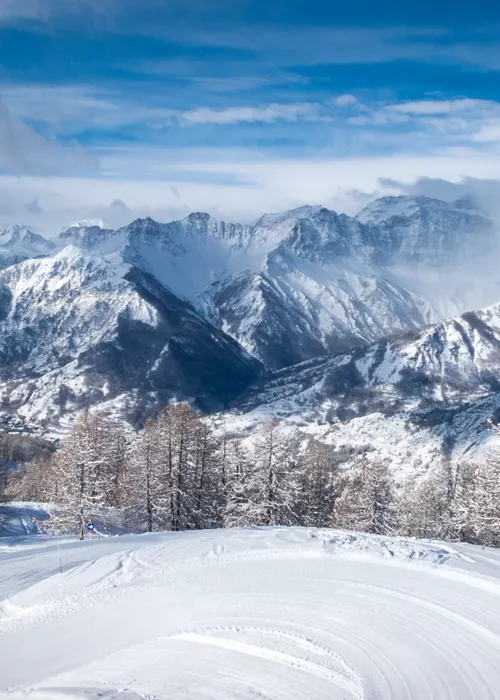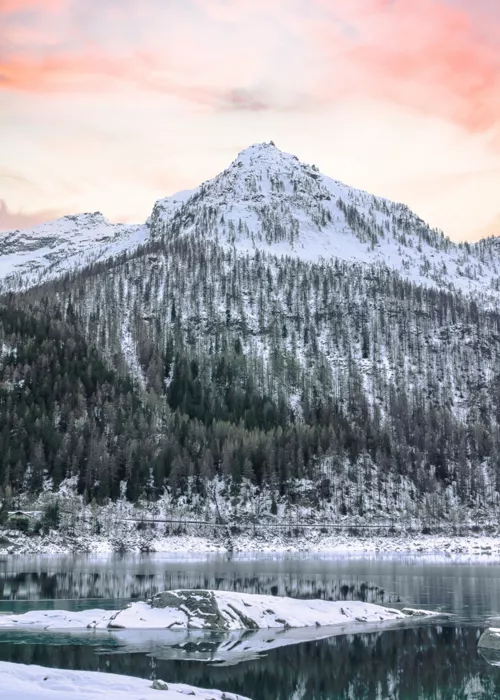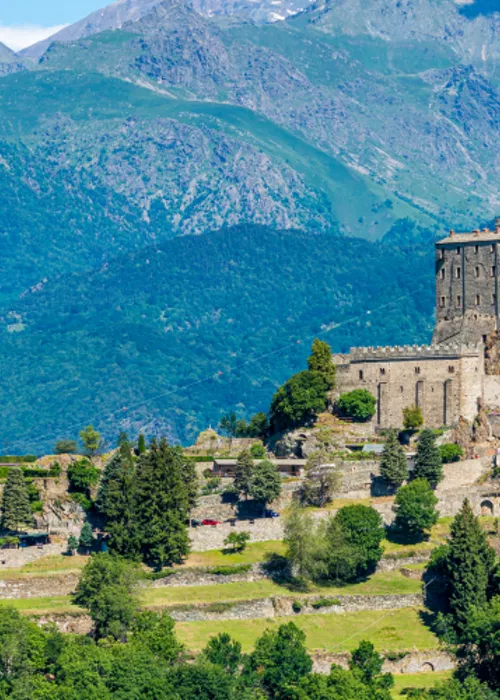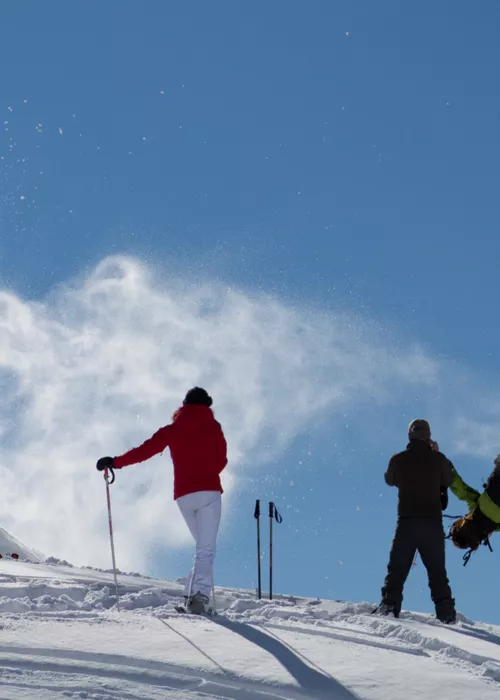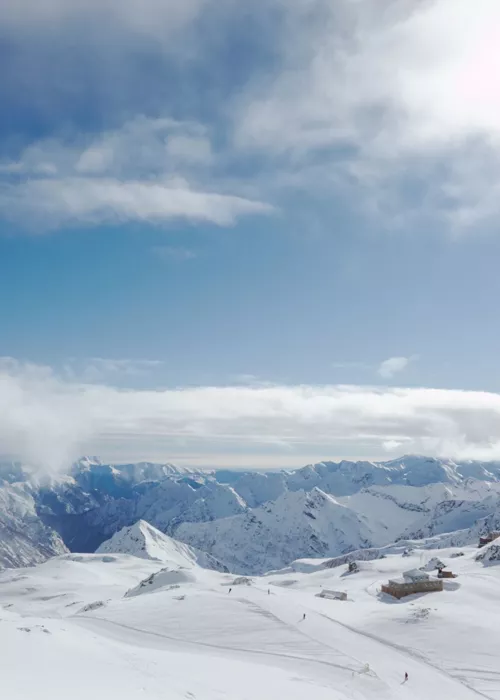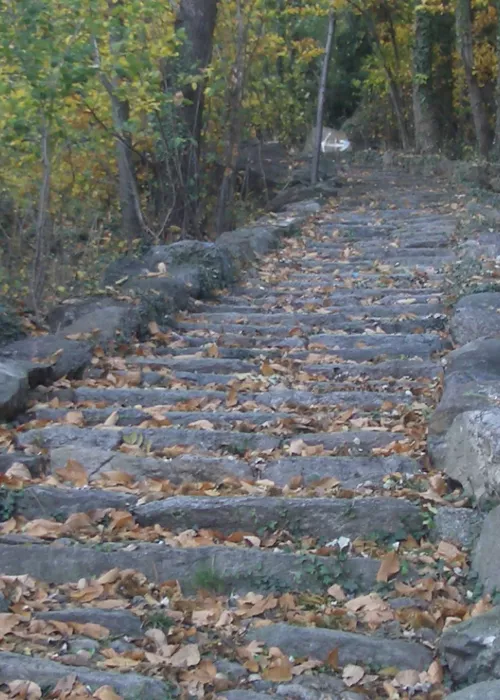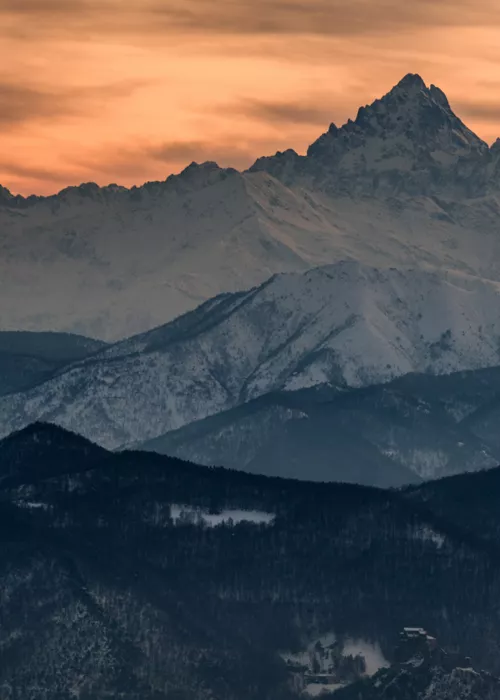Gran Paradiso Experience: three days in the Gran Paradiso National Park
5 minutes

Index
Nature takes centre stage in the Gran Paradiso National Park, Italy’s oldest national park, where the serene majesty of high mountains and mirror‑bright alpine lakes sets the scene. To claim a front‑row seat, start across western Canavese, pausing at a major place of worship, then continue to high‑altitude villages, wild valleys and great mountains under perennial snows. Expect extraordinary nature and abundant wildlife. Gently sloping plateaus and rivers—swift in places, tranquil in others—shape the many twilight moods of Canavese. A tonic for the eyes and for the soul.
Castellamonte: medieval village with castle, ceramics and big‑sky views

True to its medieval identity on the left bank of the Orco, Castellamonte (343 m; c. 10,000 inh.) curves in a semicircle around the hill crowned by the Castle of the Counts of San Martino, said to descend from Arduin of Ivrea, king of Italy in 1002. From the hill the view embraces the Soana and Orco valleys, the hills and the plain. Partly destroyed in the 14th century—during the revolt of the Tuchini (peasants) and amid French and Spanish incursions—the castle still shows a gate and well‑preserved stretches of wall. Cobbled lanes climb towards the manor, lined with elegant 17th‑ and 18th‑century mansions.
Catching the eye is the Rotonda Antonelliana, a circular space 66 metres across, defined by high walls in red brick and river stone—the remains of Alessandro Antonelli’s grand 1842 project for a gigantic basilica, second only to St Peter’s. The monumental work began but was halted by costs; only the circular perimeter walls and part of the columns were completed. On Piazza Martiri della Libertà stands a solitary Romanesque bell‑tower, once attached to the ancient church of SS Peter and Paul (mid‑11th century; demolished in the 19th century). The new church, in neo‑Gothic style, stands where the presbytery, choir and sacristy of Antonelli’s project would have been. Also by Antonelli is the façade of the neoclassical building that today houses the town hall. In front rises Arnaldo Pomodoro’s great arch (1995), with a 6‑metre radius, worked with abstract high‑reliefs—one of the town’s symbols.
Piazza della Repubblica is adorned with a gigantic monument to the stove by Ugo Nespolo. The noble Palazzo dei conti Botton (18th‑century forms) houses the Ceramics Museum (once the Civic Collection of Red Clay): alongside 17th‑century pieces it displays dozens of works donated by artists taking part each year in the Ceramics Exhibition—when the town becomes a vast open‑air gallery. In the labyrinthine Allaira House‑Museum—the Allaira family led Castellamonte’s ceramic industry for three centuries—you can explore works from their workshops, from stoves to the pitociu, small anthropomorphic terracotta figures once set on chimneys. In the hamlet of Spineto, towards Cuorgnè, the Fornace Pagliero Ceramic Centre preserves an early‑19th‑century production plant, whose evocative rooms regularly host exhibitions by Italian and international sculptors. Round off your visit at the two 18th‑century Baroque churches of San Rocco and San Bernardo.
Sanctuary of Belmonte: ancient spirituality and sky‑high views on the UNESCO Sacred Mount

From Castellamonte, the road opens onto fine panoramas of the Canavese pre‑Alps and the snow‑capped peaks of Gran Paradiso National Park; skirting the Orco River, you reach Cuorgnè. After the town, roads loved by local cyclists—this is a cradle of talents and champions—begin to climb, winding up narrow but not overly steep hairpins.
A side road leaves the main one for the Sanctuary of Belmonte (727 m), which crowns a ridge with a welcoming statue of St Francis, arms open to the sky. The final bends bring you to the summit and a majestic panorama over Canavese, from the plain to the pre‑Alps and Alps, the long straight line of the Serra d’Ivrea and, beyond, the Turin hills with the Basilica of Superga.
The Sanctuary is a UNESCO World Heritage Site together with the other Sacri Monti of Piedmont and Lombardy. The Piedmontese Sacri Monti are also part of the Piedmont Region’s Protected Areas system, which ensures conservation of heritage and protection of the surrounding environment. Within this devotional complex, the Sanctuary of Belmonte is a focal point of Canavese spirituality, set in a panoramic position at the heart of the Belmonte Special Nature Reserve, characterised by deciduous woods. Archaeological finds brought to light from the 1950s onwards attest to human presence here from prehistory—between the Late Bronze Age and the Early Iron Age (12th–11th century BC)—through the Roman, late‑Roman and Lombard periods. Its origins are very ancient: tradition links it to an 11th‑century sanctuary, founded—legend says—in fulfilment of a vow to the Madonna made by King Arduin.
Return to the main route and continue along a panoramic balcony road with sweeping views of hills descending to the plain, then reach Forno Canavese and Rivara, where villas and residential quarters alternate with industries in the hot‑forging and heavy‑mechanics district. In Forno, it’s worth noting the Mulino Val, a true Dutch‑style windmill built on a hill overlooking the town in the 1960s.
Beyond Cuorgnè the landscape opens again towards the mountains; paragliders sometimes drift almost to the roadside. You then arrive at Pont Canavese (second stage of day two), whose towers mark the doorway to the valleys of Gran Paradiso National Park.




